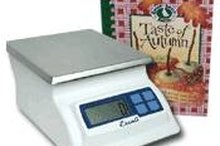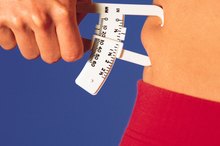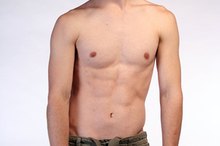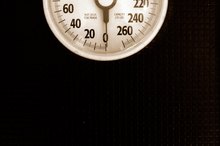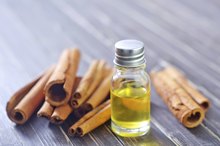Teaching Children About Weights & Measurements
Weights and measurements are important mathematical lessons that are useful throughout the school years and beyond into everyday life. There are many different types of weights and measurements, as well as different tools needed to perform the weighing and measuring. Children can start learning about them as young as kindergarten and first grade age.
When Will They Ever Need to Know This?
One of the favorite questions of reluctant learners everywhere is "When will I ever use this in real life?". Weights and measurements are applicable every day for children and adults alike. If your child is reluctant to learn, have him help you make a dessert one day. Between the measuring of the flour, sugar and salt, as well as estimating the length of time to bake the dessert, your child will understand the implications of incorrect measuring.
- One of the favorite questions of reluctant learners everywhere is "When will I ever use this in real life?".
- Between the measuring of the flour, sugar and salt, as well as estimating the length of time to bake the dessert, your child will understand the implications of incorrect measuring.
Types of Measuring and Weighing
How to Read a Digital Scale
Learn More
Weighing things is pretty straightforward. Put something on a scale and see what number comes up. But why? Food is more accurately measured when weighed by grams instead of in a measuring cup. If you have a shelf that will only hold 10 pounds, you need to know how much that solid steel figurine weighs before you place it on top. There are several different ways of measuring things, however. The most obvious one is with a measuring tape, to see how long something is. However, you must also measure dry and liquid ingredients when cooking using measuring cups.
- Weighing things is pretty straightforward.
- The most obvious one is with a measuring tape, to see how long something is.
Weighing Activities
Weighing activities don't even have to involve a scale for very young children. Give your children a handful of different items from around the house, and instruct them to put them into two piles, one for heavy things and one for light. For older children, give them a scale. If you have a kitchen and bathroom scale, let them use both. Ask them to find things around the house that weigh a certain amount 2. Alternately, give them a list of items and have them write the weight of each thing.
- Weighing activities don't even have to involve a scale for very young children.
- Alternately, give them a list of items and have them write the weight of each thing.
Measuring Activities
How to Set the Weight Readout on Taylor Electronic Scales
Learn More
Again, with young children, you don't even need tools. Have them divide objects into a long pile and a short pile. Another fun activity is to cut several drinking straws into different lengths and let your child order them from shortest to longest. For older children, create activities much like the weighing ones. Have your child look around the house for items that are a certain length, such as an inch, a foot or a yard. For measuring, you also need to have activities that require the use of measuring cups. The easiest way to do this is to simply help make food dishes. Measuring the flour and milk for morning pancakes uses both wet and dry measuring cups, as well as teaspoons for the salt and baking powder. Explain to your child what would happen if you put in too much or too little of the different ingredients.
- Again, with young children, you don't even need tools.
- Have your child look around the house for items that are a certain length, such as an inch, a foot or a yard.
Related Articles
References
Writer Bio
Rebekah Martin is a freelance writer and tutor. Her work has appeared in various online publications. She holds a Bachelor of Arts in journalism from Mississippi College. Martin teaches her young children at home and also teaches Sunday School to preschoolers.
